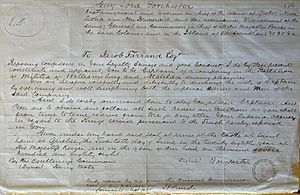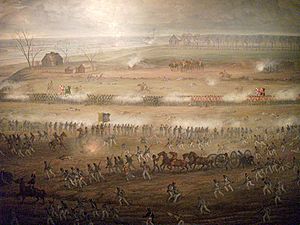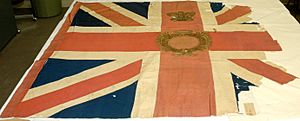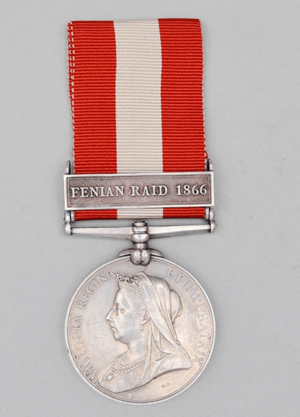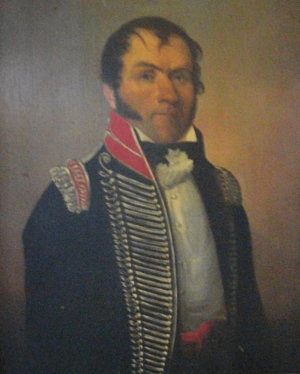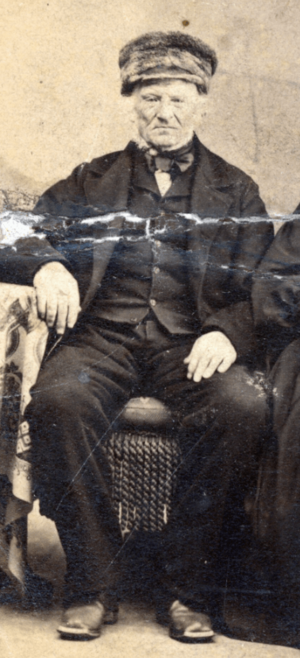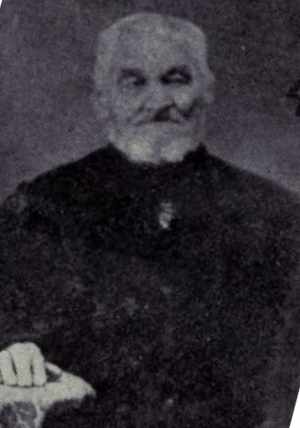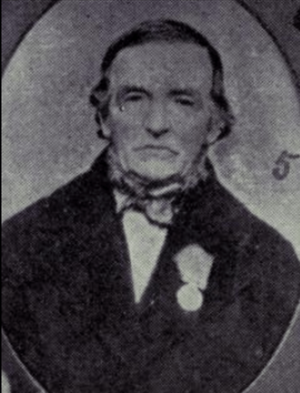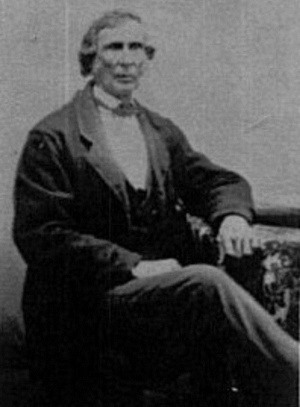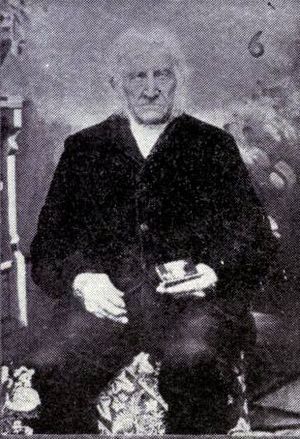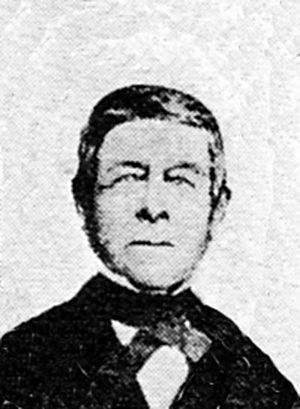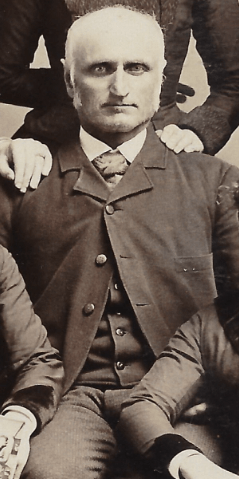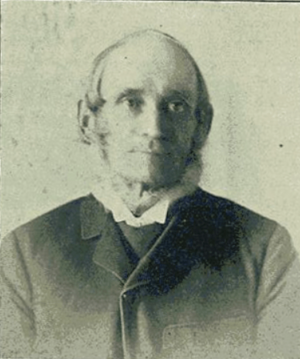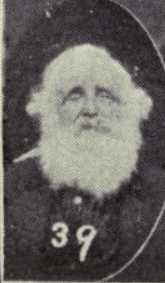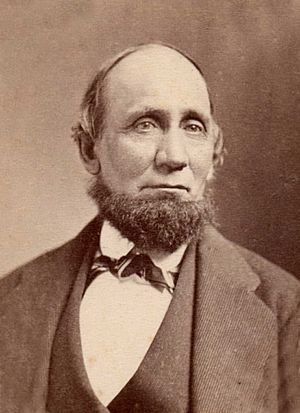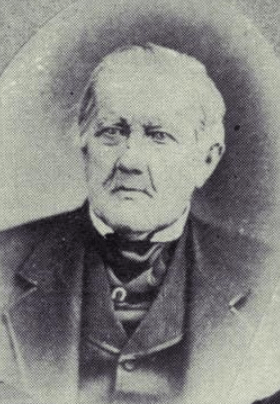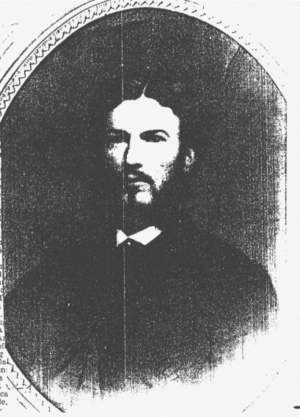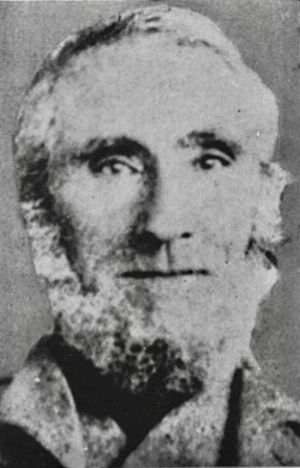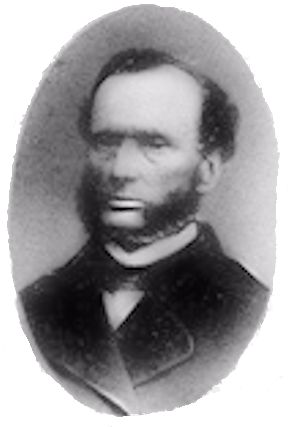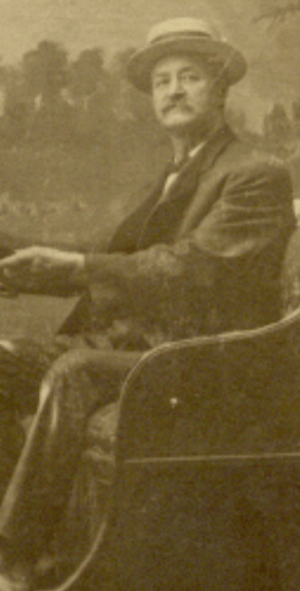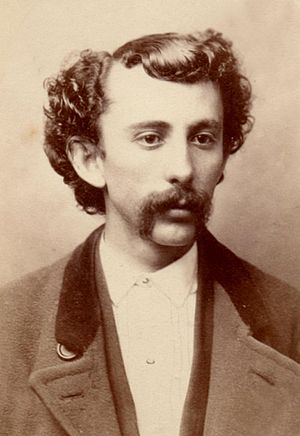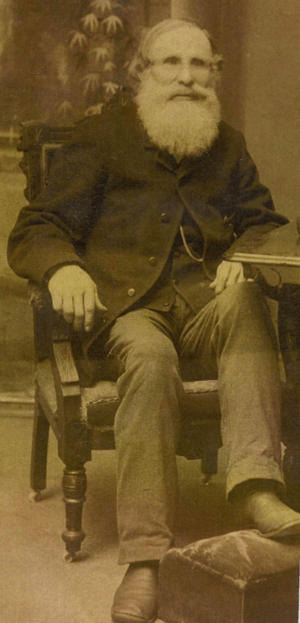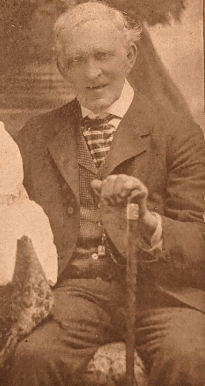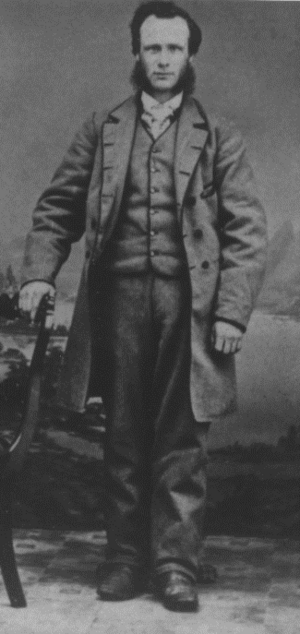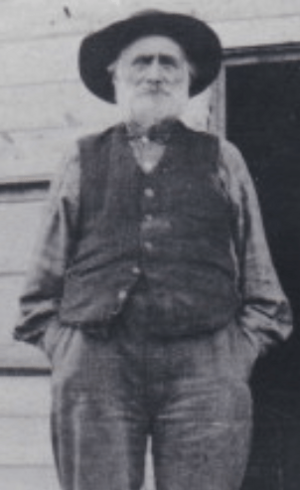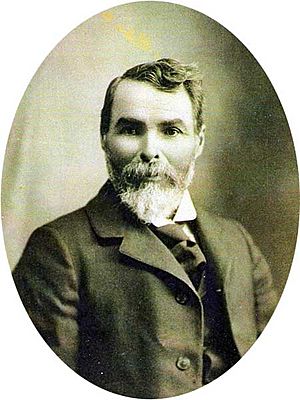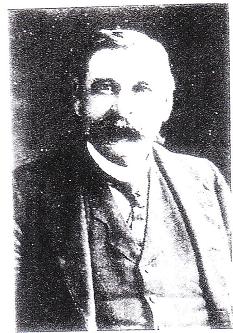Dundas County Militia facts for kids
Quick facts for kids Dundas County Militia |
|
|---|---|
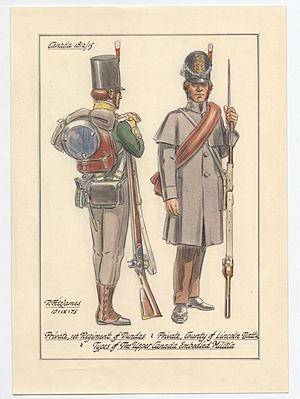
Dundas Militiaman on the left, 1813
|
|
| Active | 1788 – 1869 |
| Country | Upper Canada |
| Allegiance | United Kingdom of Great Britain and Ireland |
| Branch | Canadian Militia |
| Type | Militia |
| Size | Regiment |
| Anniversaries | November 11th (Crysler's Farm) |
| Engagements | Spanish Armament of 1793
Fenian Raids |
| Commanders | |
| Notable commanders |
Richard Duncan Allan MacDonell Thomas Fraser John Crysler |
The Dundas County Militia was a group of citizen-soldiers from Dundas County, Ontario. They were part of the local army in Upper Canada (which is now Ontario). This group was formed in the 1780s. Today, their history and achievements are carried on by the Stormont, Dundas and Glengarry Highlanders.
Contents
Early Days: Loyalists and Formation
The military story of Dundas County began when the first settlers arrived. These were Loyalist veterans from the American Revolution. They were given land in Upper Canada and quickly started a local militia. Many of these families were German Palatines who stayed loyal to Great Britain. They had fought in the war with groups like the King's Royal Regiment of New York.
The oldest record for the Dundas Militia is from June 20, 1788. Jacob Farrand was made a Captain by Lord Dorchester. His group was called the Williamsburg and Matilda Battalion of Militia. In 1792, Dundas County was officially created. The lieutenant governor, John Graves Simcoe, ordered that each county have a leader. This leader would be a judge and a militia commander. Richard Duncan became the first colonel of the Dundas Militia in 1793.
In 1793, there was a scare called the Spanish Armament. People in British colonies worried about war. Many militias were formed in Canada just in case. Colonel Duncan led the Dundas Militia, and many men joined this part-time force. Luckily, war was avoided. This event showed how important volunteer militias were for defending Upper Canada.
By 1808, the Dundas Militia had grown. It had 1 Lieutenant-Colonel, 1 Major, 4 Captains, 5 Lieutenants, 6 Ensigns, and 238 regular soldiers.
The War of 1812
When the War of 1812 started in June 1812, the Dundas Militiamen got ready. They wanted to protect their home from invasion. On July 11, 1812, they formed two companies. These became the 1st Regiment of Dundas Militia. This regiment fought throughout the war. Many men from this group also joined the Incorporated Battalion of Canadian Militia. They fought in the Niagara campaign and at the Battle of Lundy's Lane.
Here are some of the main battles the 1st Regiment of Dundas Militia fought in:
Battle of Matilda
On September 16, 1812, Dundas Militia soldiers were moving supplies. They were with the Royal Newfoundland Regiment. Near Matilda, 500 American Militia attacked them. The Americans were hiding on Toussaint Island. The Dundas militia landed on Presqu'ile Island. An American force landed there too, and a fight began. The Americans were pushed back. More Dundas men arrived to help. After some cannon and musket fire, the Americans left the island. The Canadians had one soldier killed and several wounded.
First Battle of Ogdensburg
The Dundas Militia next fought at the First Battle of Ogdensburg on October 4, 1812. They launched a raid from Prescott to get supplies. But American cannons and militia forced them to turn back.
Battle of French Mills
American militia captured a British post at Akwesasne. This was an Indigenous community on the St. Lawrence River. On November 23, 1812, a British-Canadian force took it back. The Dundas Militia was part of this force. They were carrying supplies up the St. Lawrence River.
In early 1813, Thomas Fraser took command of the Dundas Militia. Colonel Macdonell retired because of his age. Fraser served as Colonel until late 1813.
Second Battle of Ogdensburg
On February 22, 1813, a British-Canadian force attacked the American fort at Ogdensburg. The 1st Regiment of Dundas Militia was part of this attack. They crossed the frozen St. Lawrence River. The Americans fought hard but had to retreat. The British and Canadians captured the town. They burned boats and took military supplies back to Prescott.
On November 5, 1813, an American army moved down the St. Lawrence River. Lieutenant Duncan Clark of the Incorporated Militia saw them. He used to be an Ensign in the 1st Dundas Regiment. He was ordered to warn everyone about American movements. Seeing the many boats, he quickly got a horse. He rode from Elizabethtown to Prescott, shouting, "The enemy is at hand!" His ride was like Paul Revere's famous ride in 1775. Duncan Clark is now known as the "Canadian Paul Revere."
Battle of Iroquois Point
American forces under General James Wilkinson crossed the St. Lawrence River. They hoped to march on Montreal. But British and Canadian forces stopped them in Dundas County. On November 7, Dundas Militia soldiers at Point Iroquois spotted the Americans. Two brothers, Peter and John Brouse, were the first to shoot at the enemy. More Dundas Militiamen arrived. About 1,200 American soldiers landed on the shore. They began fighting the smaller militia force. The 200 men from the 1st Dundas Regiment had to fall back. But their fight gave valuable time to forces in Cornwall and Morrisburg.
Skirmish at Doran's Farm
In November 1813, an American force tried to capture British supplies. These supplies were moving up the St. Lawrence River. The British landed their supplies in Dundas County. Farmers helped load them onto wagons to go to Prescott. Suddenly, a messenger reported 500 American soldiers were coming. The wagons were moved away from the river. A small group of Glengarry and Dundas Militia went to meet the enemy. They hid in the woods near the Doran family farm. When the Americans came close, the Militia fired. They killed 11 Americans and wounded several. The Americans ran back to their boats and crossed the river. The militia then joined their supply boats and went to Cornwall.
As the Americans moved east, Trooper John W. Loucks was on duty. He was from Fraser's Provincial Light Dragoons, and used to be with the 1st Dundas Regiment. He was at the bridge over Nash Creek. When American soldiers appeared, he set the bridge on fire. This stopped their advance. He then rode east to warn the Dundas Militia. After that, he rode north and west around the American force. He contacted British forces coming from Kingston.
Battle of Crysler's Farm
On November 10, Glengarry and Stormont Militia fought Americans at the Battle of Hoople's Creek. On November 11, they joined other British and Canadian forces. This included the Dundas Militia, Leeds Militia, Canadian Fencibles, and British regiments. They fought the main American army at John Crysler's farm. This was in Williamsburg township. Captain John Crysler now led the Dundas Militia. He and Major Henry Merkley bravely led their regiment. They helped carry wounded soldiers, scouted, and brought ammunition.
Salmon River Raid
In February 1814, American forces left their supply bases near French Mills. On the 19th, a British-Canadian force, including the Dundas Militia, crossed to the Salmon River. They burned abandoned American boats and buildings. They also captured a lot of ammunition and supplies. They brought these back to Dundas.
From September 1812 until the end of the war, the 1st Dundas Regiment built and guarded forts. These were along the St. Lawrence River. One fort at Point Iroquois was rebuilt in 1814. It was called Fort Needless because there was little fighting there late in the war.
In mid-1813, two volunteer cavalry groups were formed in Dundas. They were made up of men from the Dundas Militia. Captain Fraser's Troop of Provincial Light Dragoons and Captain Adam's Troop of Provincial Light Dragoons both fought at Crysler's Farm.
Dundas Militia Casualties (War of 1812)
| Soldier | What Happened | Battle |
|---|---|---|
| Unnamed Private | Killed in action | Matilda (Sept. 16, 1812) |
| Unnamed Private | Wounded in action | Matilda (Sept. 16, 1812) |
| Capt. John Macdonell | Wounded in action | Ogdensburg (Feb. 22, 1813) |
| Pte. James Stamp | Wounded in action | Ogdensburg (Feb. 22, 1813) |
| Pte. Peter Onderark (Ouderkirk) | Killed in action | Ogdensburg (Feb. 22, 1813) |
| Capt. Jesse Wright | Died of disease | Fort Wellington (Mar. 1, 1813) |
| Ens. William Welsh | Died of disease | (1813) |
| Pte. John McKay | Accidentally wounded, lost an eye | Fort Wellington (October 22, 1814) |
Medals for Service

In 1848, the Military General Service Medal was created. It had a special clasp for the Battle of Crysler's Farm. The following men from the Dundas Militia received this medal:
- Capt. John Crysler
- Sgts. Peter Brouse, John Cook, John Loucks
- Ptes. Nicholas L. Ault, Peter Baker, Jacob Brouse, George Cook, John Doran, Frederick Laut, Peter Loucks, Angus McKay, John Pillar, Robert Redman, Conrad Kintner, Joseph Langevin, John Strader, Edward Shaver, Robert Thompson
Rebellions of 1837–1838
On January 21, 1822, the Dundas Cavalry Troop was formed. Captain Peter Shaver led it. This cavalry group worked with the Dundas Militia regiments. They served during the Rebellion in 1838.
In 1837, the 1st Regiment of Dundas Militia was changed. It was split into two battalions (or regiments). This was to better serve the new areas of Winchester and Mountain. The 1st Regiment served Winchester and Williamsburg. Colonel John Crysler commanded it. The 2nd Regiment served Mountain and Matilda. Colonel George Merkley commanded it.
When the Rebellions of 1837–1838 began, the two Dundas Militia regiments were called to defend the county. On November 12, 1838, a group called the Hunters' Lodges landed in Prescott. They took shelter in a windmill there. British soldiers and other militias were sent to push them back. At the Battle of the Windmill, 300 men from the 1st and 2nd Dundas Regiments fought. They were led by Colonel John Crysler and Colonel George Merkley. They took part in the main attack on November 13. They were also there for the surrender on November 16. Three Dundas Militia soldiers were killed, and eight were wounded.
Dundas Militia Casualties (1837-1838)
| Soldier | Group and Regiment | What Happened |
|---|---|---|
| Pte. Jeremiah Bouck | Capt. Doran's Company 2nd Dundas Regiment |
Killed in action |
| Pte. J. McMartin | 2nd Dundas Regiment | Killed in action |
| Pte. Richard Boulton | 2nd Dundas Regiment | Died of wounds |
| Lt. John Parlow (great-grandfather of Kathleen and Maida Parlow) |
Capt. Doran's Company 2nd Dundas Regiment |
Severely wounded in action |
| Sgt. John A. Shaver | Capt. Crysler's Company 1st Dundas Regiment |
Wounded in action |
| Pte. William Errington | Capt. Crysler's Company 1st Dundas Regiment |
Wounded in action |
| Pte. John Devline | Capt. Doran's Company 2nd Dundas Regiment |
Wounded in action |
| Pte. Francis Fye | 2nd Dundas Regiment | Wounded in action |
| Pte. William Myers | Capt. Doran's Company 2nd Dundas Regiment |
Wounded in action |
| Pte. James Connovers | 2nd Dundas Regiment | Wounded in action |
| Pte. William Lennox | Capt. Shaver's Company 2nd Dundas Regiment |
Wounded in action |
After the Battle of the Windmill, the Dundas Militia regiments received special flags. These flags had a windmill emblem. This was to honor their brave actions in the battle. Colonel John Crysler asked for permission to use this symbol. Around this time, the Dundas militia was sometimes called the 'Royal Dundas Regiment'. This can be seen on the flag of the 2nd Dundas Regiment.
Changes to the Militia
In 1842, the Dundas Militia was changed again. It was split into three battalions. The 1st Battalion served Williamsburg Township. The 2nd Battalion served Matilda Township. The 3rd Battalion served Winchester and Mountain Townships. These battalions were part of a larger group. This group was called the "Regiment of the Eastern District." It included battalions from Stormont, Dundas, and Glengarry counties.
In 1852, the "Regiment of the Eastern District" was broken up. The counties went back to having their own regiments. The 3rd Battalion, Dundas Militia, was split into two. The '3rd Battalion' served Mountain Township. A new '4th Battalion' served Winchester Township. The first two battalions stayed the same.
The militia report for 1859 shows the strength of the Dundas Militia:
- 1st Battalion (Williamsburg): 913 men (726 ready for service, 187 in reserve).
- 2nd Battalion (Matilda): 698 men (548 ready for service, 150 in reserve).
- 3rd Battalion (Mountain): 469 men (434 ready for service, 35 in reserve).
- 4th Battalion (Winchester): 663 men (549 ready for service, 114 in reserve).
The total strength of the regiment was 2,983 men.
The militia report for 1863 showed a total strength of 2,855 men.
Volunteer Militia and Joining Forces
When the Crimean War started in 1854, British soldiers left Canada to fight. The Canadian government then passed the Militia Act. This act aimed to create active volunteer militia companies in Canada. These companies would defend the province. Two such volunteer companies were formed in Dundas:
- 1st Williamsburg (Dundas) Rifles – Formed in Williamsburg on October 16, 1856.
- Williamsburg Troop of Volunteer Cavalry – Formed on October 16, 1856. This group was disbanded in 1858.
In the early 1860s, people in Canada worried about a possible war with the United States. Events like the Trent Affair caused alarm. More volunteer militia companies were formed in Dundas. The first new rifle company was the Morrisburg Rifle Company. It was formed on January 22, 1862. This company was disbanded in November 1862.
By the mid-1860s, there were other volunteer infantry companies:
- Morrisburg (Dundas) Infantry Company – Formed in Morrisburg on December 19, 1862.
- Dixon's Corners Infantry Company - Formed on January 2, 1863, at Dixon's Corners.
- 2nd Dundas Volunteer Infantry (Drill Association) – Formed on January 16, 1863, in Matilda Township. This was a 'drill association', like an early version of the Royal Canadian Army Cadets.
There were also two volunteer artillery companies:
- Volunteer Militia Foot Artillery Company of Morrisburg – Formed on February 14, 1862. It later became the Morrisburg Garrison Artillery.
- Volunteer Militia Foot Artillery Company of Iroquois – Formed on May 8, 1862. It later became the Iroquois Garrison Battery.
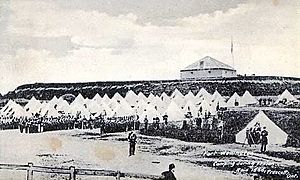
Fenian Raids
During the Fenian Raids in 1866, the Dundas artillery companies were called to serve. They were stationed along the St Lawrence River border at Prescott and Cornwall.
In the spring of 1866, an attack on Prescott was expected. But many volunteers, including two companies from Dundas, were there. A British gunboat on the river also helped prevent the attack. The Fenians then moved east. An attack on Cornwall was expected, but 3,000 troops there stopped them. On July 1, 1866, about 1,600 Fenians appeared across from Morrisburg. Theodore F. Chamberlain was sent to watch the Fenians and report back. After two weeks, the threat was gone.
James Whitney, who later became a politician for Dundas, served as a Sergeant. He was with the Cornwall Volunteer Infantry alongside the Dundas companies during the Fenian Raids in 1866.
In 1899, veterans of the Fenian Raids received the Canada General Service Medal. Many men from Dundas County received this medal for their service in 1866.
Another Fenian Raid happened on May 24, 1870. Cornwall was again filled with soldiers. The Iroquois Garrison Artillery was part of this force. For a few days, there was a lot of excitement. But the Fenians were defeated at the Battle of Pigeon Hill and Battle of Trout River. This led to the militia being sent home early. Men from Dundas County served along the St. Lawrence River during this time too.
Joining Other Units
In 1869, the Dundas Militia was split into six battalions. They had a total of 3,609 men. After Canadian Confederation in 1867, county militias became infantry battalions. The Dundas County Militia joined the 56th (Prescott) Battalion of Infantry. No. 2 Company was in Iroquois. This unit later became the 56th Grenville Regiment (Lisgar Rifles) in 1871.
Dr. Robert Reddick (1848-1930) was a doctor in Winchester. He served as a Private with the 56th Grenville Regiment (Lisgar Rifles) during the Fenian Raid of 1870. Later, he was a Field Surgeon in the North-West Rebellion.
In the 1880s and 1890s, the Dundas Militia was reorganized again. It became part of the 59th (Stormont and Glengarry) Battalion of Infantry. Its headquarters were in Cornwall. This group eventually became the Stormont, Dundas and Glengarry Highlanders. Men from Dundas continued to serve bravely in the South African War, First World War, Second World War, and even today.
Dundas Militiamen: Honoring Their Service
Roll of Honour
| Soldier | Regiment | What Happened | Battle |
|---|---|---|---|
| Unnamed Private | Capt. Ault's Company 1st Dundas Militia |
Killed in action | Battle of Matilda (Sept. 16, 1812) |
| Pte. Peter Onderark (Ouderkirk) | 1st Dundas Militia | Killed in action | Battle of Ogdensburg (Feb. 22, 1813) |
| Capt. Jesse Wright | 1st Dundas Militia | Died of disease | Fort Wellington (Mar. 1, 1813) |
| Ens. William Welsh | 1st Dundas Militia | Died of disease | (1813) |
| Pte. Jeremiah Bouck | Capt. Doran's Company 2nd Dundas Regiment |
Killed in action | Battle of the Windmill (Nov. 13, 1838) |
| Pte. J. McMartin | 2nd Dundas Regiment | Killed in action | Battle of the Windmill (Nov. 13, 1838) |
| Pte. Richard Boulton | 2nd Dundas Regiment | Died of wounds | Battle of the Windmill (Nov. 13, 1838) |
| Gnr. Macdonell | Iroquois Garrison Artillery | Died from drowning | Fort Wellington (Dec. 2, 1864) |
| Unnamed Gunner | Iroquois Garrison Artillery | Died from drowning | Fort Wellington (Dec. 2, 1864) |
| Unnamed Gunner | Iroquois Garrison Artillery | Died from drowning | Fort Wellington (Dec. 2, 1864) |
Militia Veterans
| Name | Notes | Photo |
|---|---|---|
| Richard Duncan Fraser | Lieutenant in the Dundas Militia and Captain of the Provincial Light Dragoons during the Battle of Crysler's Farm. He also led the Grenville Militia at the Battle of the Windmill. | |
| John Hickey | A Private in the 2nd Flank Company, Dundas Militia, who fought at the Battle of Ogdensburg. | |
| John Van Camp | A Private in the 1st Flank (Ault's) Company of the Dundas Militia and a veteran of the War of 1812. | |
| John Froats | A Corporal in Lt. Crysler's Company of the Dundas Militia at the Battle of Crysler's Farm. | |
| John Shaver | A Private in the Dundas Militia and a veteran of the Battle of Crysler's Farm. He is shown wearing the Military General Service Medal. | |
| Conrad Kintner | A Private in the Dundas Militia and Captain Fraser's Provincial Dragoons. He was awarded the Military General Service Medal. | |
| John Cook | A Corporal in the Dundas Militia during the War of 1812 and a Captain in the 3rd Battalion, Dundas Militia during the Upper Canada Rebellion. | |
| Peter Shaver | A Private in the Dundas Militia during the War of 1812. He was Captain of the Dundas Cavalry Troop from 1822-1840, and Lt-Col. of the 3rd Battalion, Dundas Militia, from 1846-1856. | |
| George W. Brouse | A Private in the Dundas Militia during the War of 1812. He was a Captain in the 2nd (Matilda) Battalion, Dundas Militia in 1850. | |
| John Strader | A Private in the 1st Flank (Ault's) Company of the Dundas Militia. He fought in the War of 1812 and the Upper Canada Rebellion, and was awarded the Military General Service Medal. | |
| John W. Loucks | He burned the Nash Creek Bridge to stop the American advance through Dundas. He fought at the Battle of Crysler's Farm as a Private in Captain Fraser's Provincial Dragoons. He was an Ensign in Capt. Crysler's Company, 1st Dundas Regiment at the Battle of the Windmill. He was promoted to Lieutenant and Captain in the militia in the 1840s-50s. | |
| Warner Casselman | A Private in Captain Doran's Company, 2nd Dundas Regiment, at the Battle of the Windmill. | |
| William Errington | A Private in Captain Chrysler's Company, 1st Dundas Regiment, who was wounded at the Battle of the Windmill. | |
| Allan McIntosh | A Private in Captain Shaver's Company, 2nd Dundas Regiment at the Battle of the Windmill. | |
| Charles McIntosh | A Private in Captain Doran's Company, 2nd Dundas Regiment at the Battle of the Windmill. | |
| David McIntosh | A Sergeant in Captain Doran's Company, 2nd Dundas Regiment at the Battle of the Windmill. He was an Ensign in the 2nd (Matilda) Battalion in 1847. | |
| John Adam Shaver | A Sergeant in Capt. Crysler's Company, 1st Dundas Regiment at the Battle of the Windmill. He was a Captain in the 4th (Winchester) Battalion. | |
| Giles Winfield Bogart | A Private in the Grenville Militia at the Battle of the Windmill. He was an Ensign in the 3rd Battalion, Dundas Militia in 1847, and a Captain of a company of the Dundas Militia in 1869. | |
| John Pliny Crysler | A Captain in the Dundas Militia during the Upper Canada Rebellion. He was the Commanding Officer of the 4th (Winchester) Battalion, Dundas Militia from 1859-1860s. | |
| John Van Allen | A Private in Captain Robertson's Company, 2nd Dundas Regiment at Fort Wellington in November 1838. | |
| Peter Droppo | A Private in Captain Doran's Company, 2nd Dundas Regiment in 1839. | |
| Pembroke G. Crysler | A Lieutenant in the 1st (Williamsburg) Battalion, Dundas Militia in the 1840s-50s. | |
| David Rae | A Private in the Glengarry Militia during the Upper Canada Rebellion. He was a Lieutenant in the 4th (Winchester) Battalion, Dundas Militia in 1863. | |
| Isaac Newton Rose | A Lieutenant in the Dundas Militia at the Battle of the Windmill. He was Captain of the Dundas Infantry Company from 1862 to 1865, and commanded a battalion of the Dundas Militia in 1869. | |
| James Holden | Captain of the 1st Williamsburg (Dundas) Rifles, from 1857-1864. | |
| William S. Van Allen | A Private in the 1st Williamsburg (Dundas) Rifles from 1857-1861. He was also a Private in the Morrisburg Garrison Artillery in 1862. | |
| Alexander Farlinger | A Dundas Militiaman who started the Morrisburg Volunteer Rifle Company during the Trent Affair in 1862. | |
| Thomas Stafford Rubidge | A Captain who started the Morrisburg Garrison Artillery during the Trent Affair in 1862. He commanded it during the Fenian Raids in 1866 and was awarded the Canada General Service Medal. | |
| Joseph Sherbenaut | A Corporal in the Morrisburg Garrison Artillery during the Fenian Raids of 1866. He was awarded the Canada General Service Medal. | |
| Peter Bogart | An Ensign in the 4th (Winchester) Battalion, Dundas Militia, in 1863. | |
| Robert Kyle | An Ensign in the 4th (Winchester) Battalion, Dundas Militia, in 1863. | |
| Alexander Stallmire | A Lieutenant in the 4th (Winchester) Battalion, Dundas Militia, in 1863. | |
| Henry W. Moad | An Ensign in the 4th (Winchester) Battalion, Dundas Militia, in 1863. | |
| Almon Casselman | A Gunner in the Morrisburg Garrison Artillery during the Fenian Raids of 1866. He was awarded the Canada General Service Medal. | |
| John Henry McPhee | A Gunner in the Morrisburg Garrison Artillery during the Fenian Raids of 1866. He was awarded the Canada General Service Medal. | |
| William Millar | A Sergeant in the Iroquois Garrison Artillery during the Fenian Raids of 1866 and 1870. He was awarded the Canada General Service Medal. | |
| Theodore F. Chamberlain | A Lieutenant in the Dundas Infantry Company during the Fenian Raids. | |
| Joseph Hyndman | A Captain in the Dundas Militia during the Fenian Raids. He commanded a battalion in 1869. |
Battle Honours
Battle honours are special awards given to military units for their bravery in battle. The Dundas Militia earned these honours, and their legacy is carried on by the Stormont, Dundas and Glengarry Highlanders.
War of 1812
- Defence of Canada – 1812–1815
- Crysler's Farm
Rebellions of 1837-38
- Windmill Point
Fenian Raids
- Defence of Canada – 1862–1865
- Fenian Raid 1866
- Fenian Raid 1870
See also
- Dundas County, Ontario
- Canadian Militia
- Canadian units of the War of 1812
- Battle of Crysler's Farm
- Battle of the Windmill


